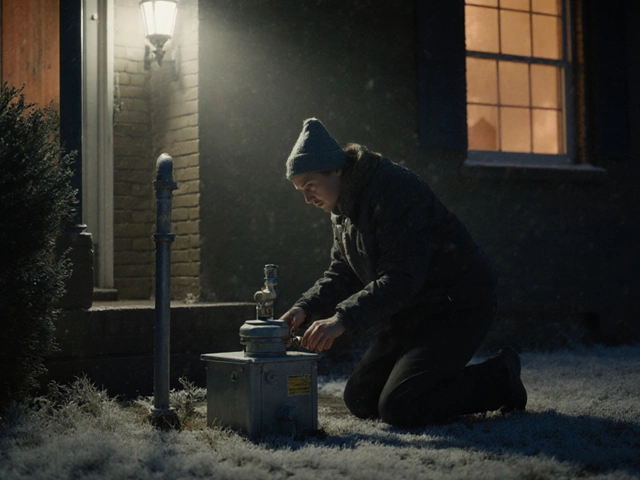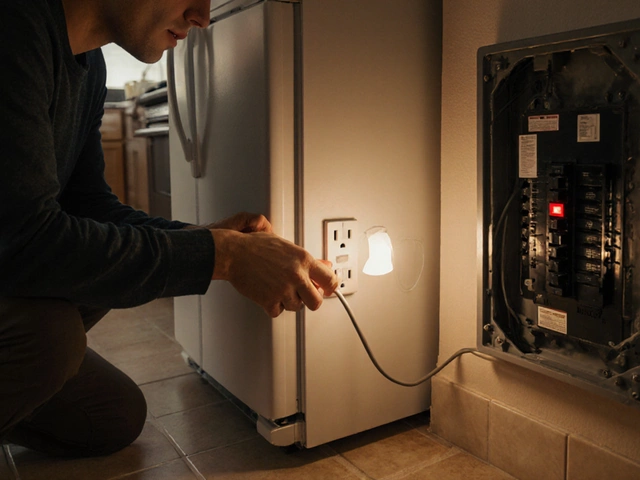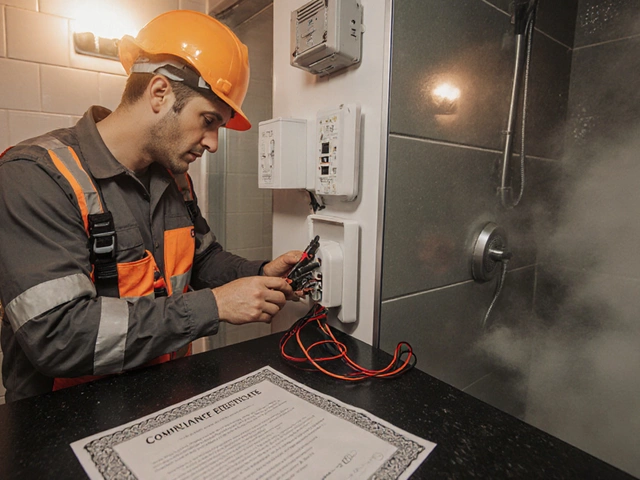The oven’s on the fritz, dinner is half-baked, and the question hits: is repairing a 10-year-old range just throwing cash down the drain? Most folks hit this fork in the road sooner or later—me included, usually with hungry kids clanging forks in the kitchen. If you’re eyeing your old range, wondering whether to call the repair guy or just call it quits, you’re not alone.
Electric ranges can be reliable, but after ten years, things like heating elements, control boards, or door seals start acting up. Sometimes it’s a simple fix. Other times, the part is crazy expensive, or the brand isn’t even making the model anymore. I’ve seen family, friends, and neighbors wrestle with the same question, usually right before a big holiday meal.
So what does it actually cost to fix a decade-old electric oven? How can you tell a minor glitch from a money pit? Let’s dig into what typically breaks, when repair is still a good idea, and how to make your oven last longer if you’re not ready to shell out for a new one. After all, nobody wants to drop hundreds on repairs just to see another part fail next month.
- What Breaks Most on Old Ranges?
- The True Cost of Repair vs. Replacement
- When Repairs Make Sense (and When They Don’t)
- How to Squeeze More Life Out of Your Old Range
- Deciding with Confidence: Your Next Move
What Breaks Most on Old Ranges?
When someone complains their 10-year-old range is on its last legs, it’s nearly always the same handful of parts. These aren’t fancy failures, just the usual suspects that wear down over years of home-cooked meals (and the odd late-night snack run).
Here’s a quick rundown of the parts most likely to give out:
- Heating elements: The bake or broil element often burns out after thousands of hours. It’s usually obvious—food isn’t cooking evenly, or there’s no heat at all.
- Oven temperature sensor: If your cakes start turning out weird or roasts are raw in the middle, blame a worn-out sensor. It tells the oven to keep things hot, but after a decade, it just isn’t as sharp.
- Control board: Electronic ranges lean on a control board (the oven’s brain). When it fails, the oven may not turn on or gets stuck on wrong settings. These repairs can get pricey.
- Door gasket or seal: A flat or torn seal lets heat leak out, so food cooks unevenly and the kitchen gets hotter than the oven.
- Burner switches and knobs: If you have trouble adjusting heat—or a burner stays stuck on “high”—the switch or knob is usually shot.
Here’s a cheat sheet of common failures on a 10-year-old electric oven, plus how often each one pops up, based on consumer surveys from 2023:
| Part | Typical Failure Rate (10-Year Mark) | Average Repair Cost (USD) |
|---|---|---|
| Heating Element | 24% | $110 - $230 |
| Oven Sensor | 17% | $90 - $160 |
| Control Board | 14% | $180 - $400 |
| Door Seal/Gasket | 11% | $35 - $85 |
| Burner Switch/Knob | 9% | $40 - $120 |
If you spot uneven cooking, flickering displays, or a door that won’t close tight, it lines up with these problem parts. You don’t have to fix all of them at once—just know where to look first if your old range starts acting up. The price tag jumps fast when you move beyond the simple stuff, especially for the electric oven repair jobs involving control boards. Sometimes, you’ll spend more on a big repair than a new budget model costs. Always ask for a quote before you commit.
The True Cost of Repair vs. Replacement
Here’s where it gets real: fixing a 10-year-old oven usually costs between $150 and $400 if it’s a standard repair, like swapping a heating element or fixing a control board. If you’re unlucky and something big like the electronic control panel goes, you could be looking at $500+, especially with labor. For most families, that’s a chunk of change.
Compare that to new ranges. Basic models start around $400, while mid-range options hover close to $750–$1,200. A top-of-the-line smart oven can run over $2,000, but most folks stick to something mid-level.
| Repair Type | Average Repair Cost |
|---|---|
| Heating Element | $180 |
| Control Board | $300 |
| Thermostat | $220 |
| Door Seal | $120 |
| Main Electronic Panel | $500+ |
So here’s a simple rule: if your repair cost is more than half the price of a new range, it’s probably not worth it. Also, think about hidden stuff—like energy use. Old ovens can gobble up more electricity, meaning higher bills over time. And if you need two repairs in a year, those costs add up fast.
Here are a few questions to help make the choice clear:
- Is the model still made, or are parts a pain to find?
- How often have you already fixed it in the past year?
- Does your range do everything you need, or would an upgrade fix old annoyances?
If your old oven’s been chugging along without many problems, a simple repair can be worth it. If it’s eating through paychecks with new surprises each season, replacing it could actually save you money and headaches. Remember, the electric oven repair path only pays off if your fix will truly add years, not months, to its life.

When Repairs Make Sense (and When They Don’t)
Not every busted stove is ready for the scrap heap. Sometimes fixing an old oven is a smart move—especially if the problem is minor and the rest of the machine is working fine. Other times, you’re just putting off the inevitable. Knowing which camp you fall into can save you a ton of money and frustration.
So, when does it actually make sense to call for an electric oven repair? If your issue is with common problems—like a burned out heating element, a faulty temperature sensor, or a broken door seal—you’re usually looking at repairs under $250. These fixes are straightforward, the parts are still available, and you’ll likely get a couple more years out of your range.
- Heating element crackles out? Replacing it usually costs $80 to $220, parts and labor.
- Temp sensor making your cookies burn? That swap runs around $100 to $200.
- Door seal shredded and letting heat out? Under $150 for a new one, installed.
If your range looks pretty good otherwise—no rust, no weird smells, no weird electrical zaps—going ahead with these repairs is probably the sensible move.
But here’s when you should pause and rethink. If you’ve already had two or three repairs in the last year, or if the repair bill right now is more than half the cost of a mid-range replacement (usually $600–$900), you’re better off cutting your losses. Problems with the control board or wiring? These get expensive fast, sometimes over $400, and they’re more likely to signal other old-age issues coming soon.
I always remember what a veteran appliance tech told me:
“If your oven is old enough for middle school and the numbers on the bill make you cringe, you’re probably due for an upgrade.”
Another red flag is if your range’s model is discontinued, or parts are hard to find. Nothing’s more frustrating than waiting weeks for a tiny piece, only to realize you could have bought a new unit and been baking again days ago.
Bottom line: minor, cheap fixes on a decent machine? Go for it. Costly repairs, lots of breakdowns, and rare parts? Time to look at a new oven.
And here’s a quick rule of thumb I tell friends: If the repair costs more than 50% of a new range, or your appliance is over 15 years old, just replace it. You’ll save cash (and headaches) in the long run. Don’t let nostalgia make your decision—your dinners (and sanity) are worth more.
When in doubt, get a quote for the fix and check how much a replacement actually costs. Prices and deals change fast, especially around holidays or back-to-school season. Check reviews, compare warranty offers, and remember to factor in delivery or installation costs for either choice.
Choosing between electric oven repair and replacement isn’t just about today’s bill; it’s about what’s truly going to keep your kitchen running without blowing your budget.
How to Squeeze More Life Out of Your Old Range
You want to keep your trusty oven running, not just cross your fingers every time you bake. Believe it or not, most electric oven repair calls happen because of simple maintenance stuff you can do yourself—no toolbox needed.
First off, regular cleaning matters more than most folks think. Crumbs and grease build up fast, clog burner holes, and basically cook the electronics inside over time. A quick wipe-down after every use and deeper cleaning every few months goes a long way.
- Check the door seal (gasket): If the seal is cracked or sagging, heat leaks out and your range has to work overtime. You can pick up a new gasket online for $20-$60 and it's usually a simple pop-out, pop-in job.
- Inspect heating elements: If the oven isn't heating evenly, the element might be covered in gunk—or actually cracked. Replacement is way cheaper than calling for help. Just unplug the oven before you touch anything.
- Keep the vents clear: Blocked vents mean poor airflow, which wears out sensors and leads to weird temperature swings. Most vents can be vacuumed or wiped out with a paper towel.
- Level the range: An unlevel oven messes up cooking and puts strain on internal parts. A trip to the hardware store for a $5 bubble level solves this (and your cakes will thank you).
One more hidden trouble spot: self-cleaning cycles. They're handy, but they bake your oven at super-high temps and can fry control boards. Use them sparingly, and if you're seeing weird error codes after running self-clean, that's usually why.
Here’s a quick look at which fixes people tend to need for 10-year-old ovens, and how much each might run if you do it yourself:
| Common DIY Fix | Parts Cost ($) | Difficulty (1-5) |
|---|---|---|
| Replace door gasket | 20-60 | 2 |
| Swap heating element | 30-80 | 2 |
| Replace thermostat sensor | 40-100 | 3 |
| Clean vent and burner areas | 0 | 1 |
Do yourself a favor and unplug the oven before poking around—safety first. And when in doubt, especially when you smell burnt wires or the screen glitches badly, it's smart to bring in a pro. But if you're just dealing with loose gaskets or a gummed-up element, these small moves can easily buy you another year or two with your current range.

Deciding with Confidence: Your Next Move
If you’re still stuck on whether to patch up your old range or send it to appliance heaven, don’t just guess—look at the facts and the math. Ranges hitting ten years usually sit right on the fence in terms of average lifespan. Most electric ranges last between 13 and 15 years if cared for, but repairs get pricier and trickier as they age. That’s not just talk—Consumer Reports and appliance repair companies peg major repairs right around the decade mark, especially for big ticket stuff like digital controls or heating elements.
Here’s the thing everyone forgets: even if your range “works,” it might be using more power than needed. Older ovens often run less efficiently, quietly bumping up your electric bill. Depending on your usage, swapping to a new, ENERGY STAR rated model could save up to $50 a year on energy costs. Over another decade, that’s $500 in utility bills you might avoid.
| Option | Average Immediate Cost | Est. Lifespan After Fix/Buy | Energy Use |
|---|---|---|---|
| Repair (heating element) | $220 - $350 | 1-3 years | Average/Older |
| Repair (control board) | $300 - $600 | 1-3 years | Average/Older |
| Buy New (standard) | $600 - $1,300 | 10-15 years | More Efficient |
So, how do you make the call? Keep it simple. Ask yourself these questions:
- Will this repair cost more than half the price of a new range?
- Has my oven needed two or more repairs in the past year?
- Is it hard to find the right parts, or is service getting slow?
- Is my oven using more electricity or cooking less evenly than before?
If you answered yes to a couple of those, a new range is probably going to save you headaches—and money—in the long run. But if it’s the first little hiccup after years of solid use, fixing it might still make sense. Either way, don't wait until it fully conks out in the middle of a busy dinner. Check deals on new models and see if local repair shops will give a firm quote before you start. And when you do decide, be proud you actually weighed the options instead of just winging it. Kitchen appliances aren’t cheap—doing this homework gives you real control.
If you want your next range to go the distance, look for one with solid user reviews and easy-to-replace parts. Brands like GE, Whirlpool, and LG come up a lot in reliability studies—and those repair costs above back that up. Fixing or replacing, confidence comes from knowing what you’re really in for, not just trusting your luck with a tired old oven or a flashy replacement you haven’t researched. Thinking ahead now means fewer cold pizzas and a happier, smoother kitchen down the line. If you stick with a repair, check that your electric oven repair is covered by at least a 90-day warranty—that’s pretty standard and gives you some fallback if things go sideways.







